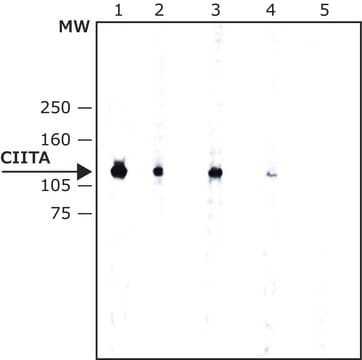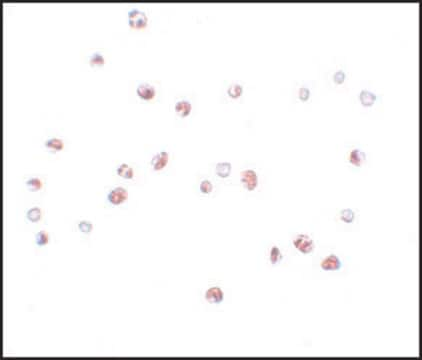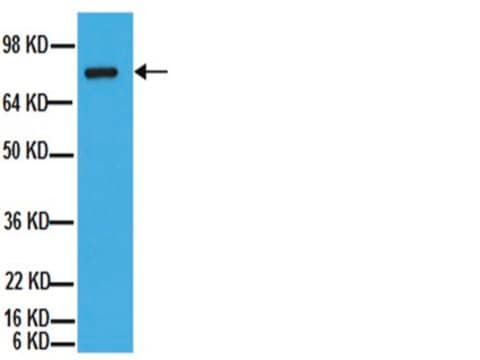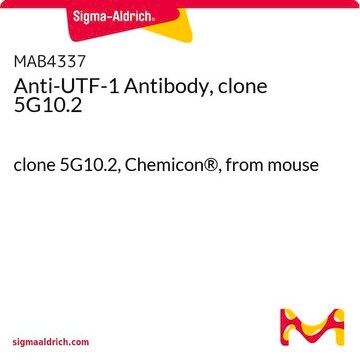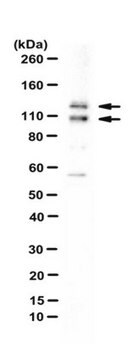MABF260
Anti-NLRC5 Antibody, clone 3H8
clone 3H8, from rat, purified by using protein G
Synonym(s):
Protein NLRC5, Caterpiller protein 16.1, CLR16.1, Nucleotide-binding oligomerization domain protein 27, Nucleotide-binding oligomerization domain protein 4
About This Item
Recommended Products
biological source
rat
Quality Level
antibody form
purified antibody
antibody product type
primary antibodies
clone
3H8, monoclonal
purified by
using protein G
species reactivity
human
technique(s)
flow cytometry: suitable
immunoprecipitation (IP): suitable
western blot: suitable
isotype
IgG1, kappa
UniProt accession no.
shipped in
wet ice
target post-translational modification
unmodified
Gene Information
human ... NLRC5(84166)
Related Categories
General description
Specificity
Immunogen
Application
Immunoprecipitation Analysis: A representative lot detected poly(I:C) (Cat. No. 528906) treatment-induced upregulation of endogenous NLRC5 in HeLa cells by IP-Western blotting analysis of both cytosolic and nuclear fractions. A strong NLRC5 nuclear accumulation was seen upon nuclear export inhibition by LepB (Cat. No. 431050) treatment, whereas NLRC5 was mainly cytoplasmic in untreated cells (Neerincx, A., et al. (2012). J. Immunol. 188(10):4940-4950).
Western Blotting Analysis: A representative lot detected NLRC5 in THP-1 cell lysate as well as exogenously expressed FLAG-tagged NLRC5 in lysate from transfected HEK293T cells. Target band detection was greatly diminished using lysates from NLRC5 siRNA-transfected THP-1 cells. (Neerincx, A., et al. (2010). J. Biol. Chem. 285(34):26223-26232).
Inflammation & Immunology
Immunoglobulins & Immunology
Quality
Western Blotting Analysis: 1 µg/mL of this antibody detected NLRC5 in 10 µg of Raji cell lysate.
Target description
Physical form
Storage and Stability
Other Notes
Disclaimer
Not finding the right product?
Try our Product Selector Tool.
Storage Class Code
12 - Non Combustible Liquids
WGK
WGK 1
Flash Point(F)
Not applicable
Flash Point(C)
Not applicable
Regulatory Listings
Regulatory Listings are mainly provided for chemical products. Only limited information can be provided here for non-chemical products. No entry means none of the components are listed. It is the user’s obligation to ensure the safe and legal use of the product.
JAN Code
MABF260:
Certificates of Analysis (COA)
Search for Certificates of Analysis (COA) by entering the products Lot/Batch Number. Lot and Batch Numbers can be found on a product’s label following the words ‘Lot’ or ‘Batch’.
Already Own This Product?
Find documentation for the products that you have recently purchased in the Document Library.
Our team of scientists has experience in all areas of research including Life Science, Material Science, Chemical Synthesis, Chromatography, Analytical and many others.
Contact Technical Service
